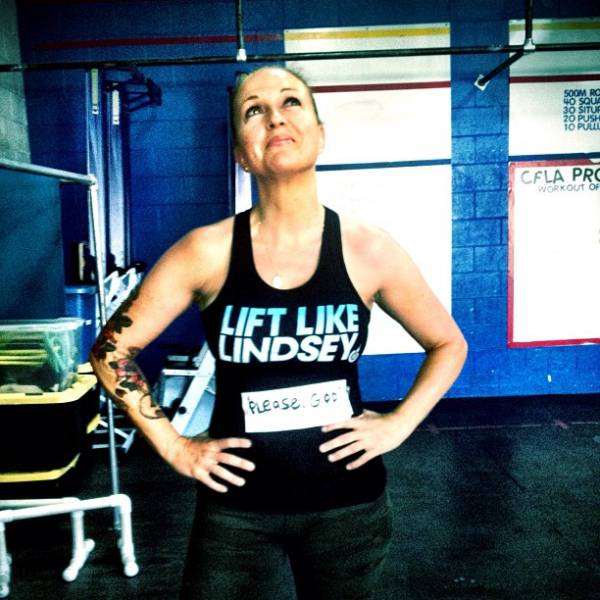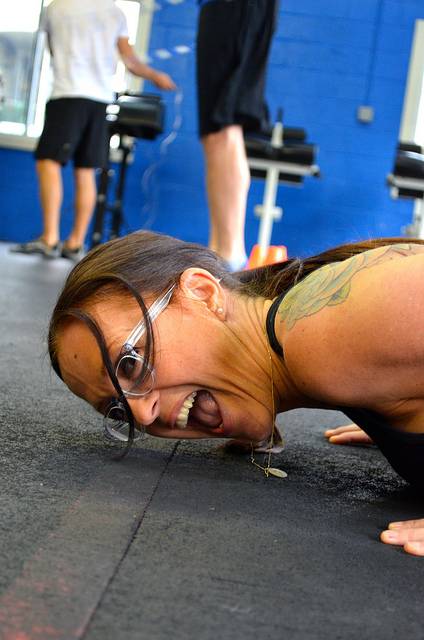Like a lot of women – and I assume many men – my moods were once tethered to a number that appeared on the scale. In high school, I remember abiding by an imaginary rule that a girl did not mention her weight unless it was 120lbs or less, no matter the girl’s height or muscle mass. We didn’t even know we had muscle mass back then and we were taught to be embarrassed if we “tipped” the scales at 130 and beyond. I was an athlete my entire growing up yet I only remember one’s weight being the top indicator of health. It didn’t matter that the unfounded standard for women was impossibly general and low, or that it was skewed by industries completely unrelated to sports or real fitness. So, we learned to lie, and the cycle of shame about our weight continued as passed down from our grandmothers.
I’m older now, and more informed. I know to flip off mainstream ideals when it comes to women’s shapes and sizes. More importantly, I stopped letting the scale dictate my self worth and for a very long time that meant not stepping on it at all. For the last couple years, as I’ve allowed myself to be and think like an athlete again, I’ve come to realize that tools to measure my fitness progress are in fact useful if only to mark where I am at a particular time. I also know to use a wide range of techniques to track progress – the scale being the least informative. Even though I’m as healthy mentally as I’ve ever been about my body, I still need to tread lightly on how I let any measurement define me.
Last week, I took a hydrostatic body fat test, which, for now, is considered the gold standard for comparing one’s body fat to lean muscle mass. This was my third hydrostatic test in two and a half years. I like this type of measurement because even if the scale is not moving, I can clearly see my lean muscle mass climbing as my body fat lowers. The second time I took the test, one year after starting CrossFit, I had only lost a pound according to the scale, but I’d lost six pounds of fat and gained five pounds of muscle. I was ecstatic to see that statistic, though many years ago I would have beat myself up for only losing a pound after a year of rigorous exercise no matter how I felt or how my clothes fit.
 This last test, I measured at 16.2% body fat, down over nine total percentage points in two and a half years. I was stoked over this impressive improvement, but it was hard to not get caught up in the number for a second. I love the changes, but I can’t hang my hat on one component of my fitness or it will turn as toxic as the scale number used to be. For a nanosecond, I felt a little panicked. Would I be able to keep the number low? Should it be lower? Before the test, I was happy training regularly and eating cleanly without feeling too restricted, but as soon as a number was attached to the progress, I felt a twinge of pressure. I sometimes feel the same when I hit a personal best in weight lifting. Will I be able to lift that much again? When will I be able to improve that? When should I? Breaking this old way of thinking sometimes takes as much practice as the training itself, but the ability to keep joy in the forefront is as much part of my fitness as anything else.
This last test, I measured at 16.2% body fat, down over nine total percentage points in two and a half years. I was stoked over this impressive improvement, but it was hard to not get caught up in the number for a second. I love the changes, but I can’t hang my hat on one component of my fitness or it will turn as toxic as the scale number used to be. For a nanosecond, I felt a little panicked. Would I be able to keep the number low? Should it be lower? Before the test, I was happy training regularly and eating cleanly without feeling too restricted, but as soon as a number was attached to the progress, I felt a twinge of pressure. I sometimes feel the same when I hit a personal best in weight lifting. Will I be able to lift that much again? When will I be able to improve that? When should I? Breaking this old way of thinking sometimes takes as much practice as the training itself, but the ability to keep joy in the forefront is as much part of my fitness as anything else.
Two days ago, during a teen CrossFit class that I coach, I conducted a goal setting session with students after the workout. I only had two girls in class, which provided an honest atmosphere for dialogue where I learned how important the number on the scale was already for these girls. They heard it from their families, too, about their weight and how they should look – that they should be thinner, that they shouldn’t be too bulky or muscular. Their only measurement of progress had to do with looks and weight. And my heart broke. I knew I had an opportunity to help stop the perpetuation of this way of thinking and I gave them a heart-felt talk about how health starts with accepting ourselves exactly as we are in this moment. Though there may be areas we’d like to improve, whether physically or performance-wise, we are still perfectly fine how we are. In that perfection and acceptance we are more freely able to go after any goal we want. If reaching goals comes from that place – a positive and kind place – we will mostly likely sustain the results.
 Looking at these girls and seeing how they were starved for the words I said to them was a powerful reminder to myself. Just because the scale no longer has a hold of me doesn’t mean I should swap out the weight number for any other number that also does not shape my worth. I am not my deadlift. I am not my slow-progressing front squat. What I am is consistency. I am my willingness to give it a go another day whether the previous results were good or bad. I am my excitement to train. I am how great I feel. I am my ability to help others improve their own strength and overall health even if they then pass me with better numbers. This is how I measure my fitness. These things define me more honestly than any graph or charted data.
Looking at these girls and seeing how they were starved for the words I said to them was a powerful reminder to myself. Just because the scale no longer has a hold of me doesn’t mean I should swap out the weight number for any other number that also does not shape my worth. I am not my deadlift. I am not my slow-progressing front squat. What I am is consistency. I am my willingness to give it a go another day whether the previous results were good or bad. I am my excitement to train. I am how great I feel. I am my ability to help others improve their own strength and overall health even if they then pass me with better numbers. This is how I measure my fitness. These things define me more honestly than any graph or charted data.
Scale number, body fat tests, improved workouts, and weights lifted are simply markers. I celebrate any noted progress forward, but these numbers only mark where I am for now and nothing more. Regardless of any number, I feel fantastic, better than I ever have. It’s hard to find empirical data to track feelings, but for me everything else comes in a very distant second.
Photos courtesy of Shutterstock and CrossFit LA.






